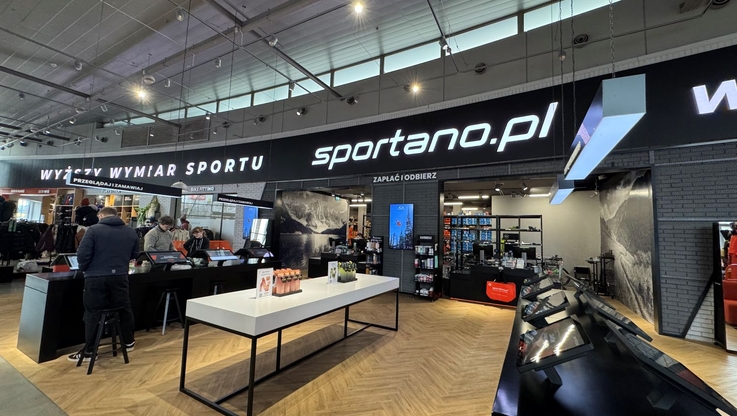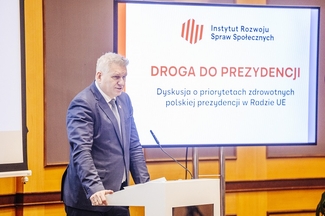Pobierz materiał i Publikuj za darmo
Due to its strategic location, resources and vulnerability to climate change, the Baltic Sea has a considerable impact on the development of Poland as a whole – and it will continue to grow in the coming decades. With its central location, the Baltic has for centuries connected a vast region stretching from the Norwegian fjords to the Vistula valley. In the 21st century it also serves an important function for the economic development of several countries and regions.
The Baltic Sea Region (BSR) comprises Poland, Lithuania, Latvia, Estonia, Finland, Sweden, Denmark and northern Germany, as well as Norway, Belarus and north-west Russia. The last three are not members of the European Union, which, however, does not prevent them from active participation in international projects related to the Baltic Sea. The BSR is also the first European macro-region with a spatial development vision adopted in 1994 and renewed in 2009. One of its core aims is to support close co-operation of all countries located in the Baltic Sea’s sphere of influence to maximise its potential and protect the Baltic ecosystem.
The “Interreg Baltic Sea Programme”, one of the pillars of the EU’s cohesion policy, is an example of how all the Baltic Sea states can be seen as a whole economic construct. Its aim is to integrate the countries along the Baltic coastline by creating new transport, cultural and business interconnections between them. Under the currently ongoing call for proposals for 2021-2027, projects in the fields of innovation, management of natural resources, sustainable transport and cooperation between regions can receive EU funding. The budget of the current edition of the programme amounts to around EUR 280 million.
The Baltic also plays a key role in Poland’s development. And it is not just about traditional economic sectors, such as tourism or fisheries, but also about the innovative ones – such as the construction of wind farms to produce environmentally friendly energy. Coordinated cooperation between all the states around the Baltic Sea is also required to protect the marine ecosystem – a further growth of water levels and temperatures in the Baltic Sea threatens not only the organisms living in it, but also the coastal regions at risk of flooding, such as the Hel Peninsula and the Vistula Lagoon.
The geographical area around the Baltic Sea is also the focus of ESPON, an international project for sustainable development research and support in Europe. Its experts presented three potential scenarios for the development of the countries located around the Baltic Sea towards 2050, highlighting the opportunities and challenges resulting from each of them.
The first scenario assumes that there will be no significant developments in the policies of the Baltic States over the next decades. Then, according to ESPON, the population of the BSR countries will clearly decrease, mainly due to population ageing. Exceptions will be: Norway, some Danish regions and the metropolises of Warsaw, Copenhagen, Stockholm and Helsinki. The current economic divide that reflects the spatial distribution of thriving economies in the west and the declining economies in the east will persist. Only the largest cities in Poland will achieve GDP per capita growth comparable to Western Europe, and it will be much higher than in other regions of Poland. In 2050, the main agglomerations of all BSR countries are the drivers of the national economies at the expense of rural areas.
The second scenario expects that BSR countries will move away from a linear economy towards a circular economy, in which raw materials and products remain in circulation as long as possible and their value is maximised. This will mean an increasing importance of small and medium-sized urban centres, acting as “regional capitals”, at the expense of the largest metropolises. The migration of people from urban to rural areas is also possible, as more and more of them will want to live closer to nature. Consumption habits will change – we will buy more consciously, mindful of the needs of the natural environment. It is also likely that the unfavourable demographic trends will be stopped.
In the third scenario, the Baltic Sea Region is a leader in green technology and the achievements of the fourth industrial revolution are at the epicentre of everyday life. There is an increasing concentration of economic activity around the current metropolitan areas, which in most cases are the capital cities. Copenhagen, Helsinki, Tallinn and Malmö are becoming global green technology capitals, while other urban areas, in Poland and Germany, are attracting innovative companies, building the potential to achieve this status in the future. Freight transit highways stretch from the east through the Baltic Sea and Poland towards the larger North Sea ports.
The scenarios outlined by ESPON are not merely futurology – they are based on the long-term observation of economic and demographic trends. In each of them, however, Poland’s development success depends on close cooperation with other BSR countries. The selection of the optimal development path is, in the opinion of ESPON experts, one of the key challenges facing Polish decision-makers today.
The full version of the ESPON study on the Baltic Sea Region can be found here.
Source: PAP MediaRoom
Pobierz materiał i Publikuj za darmo
bezpośredni link do materiału
| Data publikacji | 23.07.2021, 10:00 |
| Źródło informacji | PAP MediaRoom |
| Zastrzeżenie | Za materiał opublikowany w serwisie PAP MediaRoom odpowiedzialność ponosi – z zastrzeżeniem postanowień art. 42 ust. 2 ustawy prawo prasowe – jego nadawca, wskazany każdorazowo jako „źródło informacji”. Informacje podpisane źródłem „PAP MediaRoom” są opracowywane przez dziennikarzy PAP we współpracy z firmami lub instytucjami – w ramach umów na obsługę medialną. Wszystkie materiały opublikowane w serwisie PAP MediaRoom mogą być bezpłatnie wykorzystywane przez media. |





